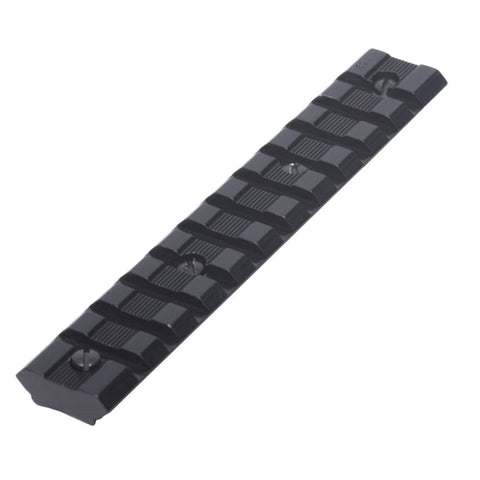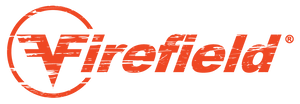Firefield Shooting Accessories
Shooting activities, whether it’s hunting, range work, 3-gun competition or law enforcement, involve a fair amount of equipment and accessories. A firearm alone is not enough.
Have you ever tried carrying an AR-15 for more than 30 minutes? It’s exhausting—and a sling would be the perfect solution. Have you ever tried to fit a quality optic and accessories onto your rifle?
If there’s not enough mounting space, a rail would be the ideal piece of equipment to solve your problem. What if you need to cut, file, screw or grip something? A multi-tool would be your saving grace.
For all these minor shooting inconveniences, Firefield has the answer. Firefield’s vast selection of shooting accessories ensure that when you get ready to shoot, you have all the necessary equipment to be successful.

Rifle Slings
All military servicemembers who have been in combat zones and carried firearms know the value of slings. But, they seem so simple—a loop of synthetic fiber, usually three strand construction—that takes the weight of the rifle off your arms.
How much weight, you ask? Most AR-15s weigh between six and eight pounds, and with added accessories, can easily exceed ten pounds. Therefore, if you went on a hike and expected to hold ten pounds of equipment with your arms the whole time, you would quit before scenic overlook #1.
Slings allow you to carry your firearm with relative ease for long distances, and they allow your hands to be free for other purposes (drinking water, scratching your neck, texting grandma).
Depending on your preference, you can utilize a single, double or triple-point sling.

A single-point sling is very basic.
Think of a slipknot with a clip on one end of the rope. Next, simply put your head and shooting-arm (for most people, it’s their dominant right arm) through the loop, attach the clip to the rifle and then adjust the length of the sling so the rifle hangs freely in front of you (barrel pointed down).
This basic setup is excellent for freedom of movement and quick aim-and-fire situations.

Double-Point Slings
A double-point sling is unbelievably complicated.
Just kidding.
As a matter of fact, like the name suggests, a double-point sling clips to your rifle at two different spots, generally the stock and towards the front of the barrel (but not all the way to the front).
Like single-point slings, doubles allow the rifle to hang in front of you, barrel pointed down. Moreover, the primary difference from single-pointers is that doubles enable you to wrap your non-dominant (supporting) arm around the forward strap. Now you can pull the rifle into your shoulder and establishing a more-stable platform.
This increases accuracy, and with a double-point sling, you can neatly secure the rifle to your back, if you don’t expect to shoot in the near-future.
Triple Point Sling
Firefield does not manufacture or distribute triple-point slings—however, a little extra knowledge never hurt anyone.
A triple-point sling is legitimately complicated, and not many people use one outside of professional shooters. Like the single and double, triple-point slings secure the rifle to your body, take the weight off your arms and allow for ease-of-access to the rifle.
You can easily get tangled in a triple-point sling and the excess loop might also snag on your belt or other parts of your rifle.
Therefore, if you opt for a three-point sling, allow ample time to practice with the various carrying positions before you venture out into the bush (or the public in general).
Accessory Rails
Rails systems are metal (sometimes polymer) mounting brackets on firearms.
The two most popular types of rails are M-LOK and Picatinny. Rails allow the attachment of scopes, laser sights, tactical lights and other accessories to your firearm.
Naturally, there are different sizes and styles of rails, and you should always ensure that you have the right kind to attach to your firearm and accommodate your unique accessories.
Firefield offers rail systems that range from 7-15 inches long. These rails are designed as a robust, skeletonized platform built with high-strength, aircraft-grade aluminum.
These rails are generally multi-purpose, lightweight, ergonomically friendly and able to handle any attachments that you deem necessary.

The Modular Lock, or M-LOK, is a slotted rail system that allows accessories to attach to the ‘hollow’ mounting points on the rail.
A very popular system, M-LOK uses a rectangular locking nut to directly attach accessories into rectangular slots. And, M-LOK is also a free licenses system, which means manufacturers can only make products using M-LOK after acquiring a license.

Developed in the early 1980s, Picatinny rails are undoubtedly the most popular rail systems in the world. They are military standard for many countries—because the interface system is so easy to use.
Picatinny allows scopes, laser sights, night-vision devices, bipods, slings and even bayonets to be mounted atop a rifle.
Picatinny and Weaver Differences
The primary difference between Picatinny and Weaver are the size and shape of the slots. As a result, almost anything that fits onto a Weaver rail will also attach to a Picatinny, but the reverse is not always true.
There are countless nuances and distinctions between the different types of rails, where they attach to the firearm and what their ideal function is.
This blog is not exhaustive. Accordingly, it has only scratched the surface of the science of firearm-rails. However, whatever your rail needs may be, Firefield likely has the solution.
For a more in-depth analysis of the different rail systems, Target Barn has an excellent article on the subject.
The Accessory Multi-Tool
The concept of a ‘multi-tool’ is roughly 1,700 years old. In the Middle East and Mediterranean regions, ancient multi-tools have been uncovered that feature knives, spoons, picks, spatulas and forks.
Needless to say, multi-tools evolved significantly in the ensuing centuries. For a quality, affordable multi-tool, visit Sightmark.com and check out this fine craftsmanship.

Let’s walk through some of the various functions of this pocket-sized toolbox:
Pliers—Used to assist in clearing a jam from your firearm, or some simple medical purpose like extracting a splinter from your finger
Wire Cutters—These are useful for any electrical work you may need to do. From fixing a vehicle engine to repairing a light fixture in a cabin, wire cutters allow you to safely strip and splice wires to make the connections you need
Hammer surface— Like any hammer surface. Use to drive nails into wood, smash rocks or make adjustments on your firearm
Two Knives— Finally, a weapon for cavemen and modern man alike, what can’t you do with not one, but two, sharp-edged knives?
Bolt Scraper— Used to clean grime and contaminants off your firearm’s bolt carrier group
Bit Driver (with 4 bits)— Make adjustments to various parts of your firearm, including the optics. Also, bits also have various important uses for basic mechanic and engineering jobs
Flathead Screwdriver— Make adjustments to various parts of your firearm, including the optics
There are 15 total tools on the Firefield Multi-Tool including: Hex wrench, Bottle opener, metal pick and cotton pin pull. The Multi-Tool is of hardy aluminum construction and comes with a durable carrying case.
The Devil is in the Accessory Details

Preparing to go on a hunt, to the range, or a 3-gun competition requires great attention to detail. So, when you’re preparing to depart, slow down and double-check your gear.
Sometimes the most important tools are the last things you’re thinking about. Make a checklist. Think about the activities you will participate in, and what the requirements are.
Practice with your firearms and accessories to ensure you’re comfortable using them. Thus, once you’ve made your accessories a mandatory piece of your shooting activities, your skill and confidence will soar higher than you ever thought possible!

